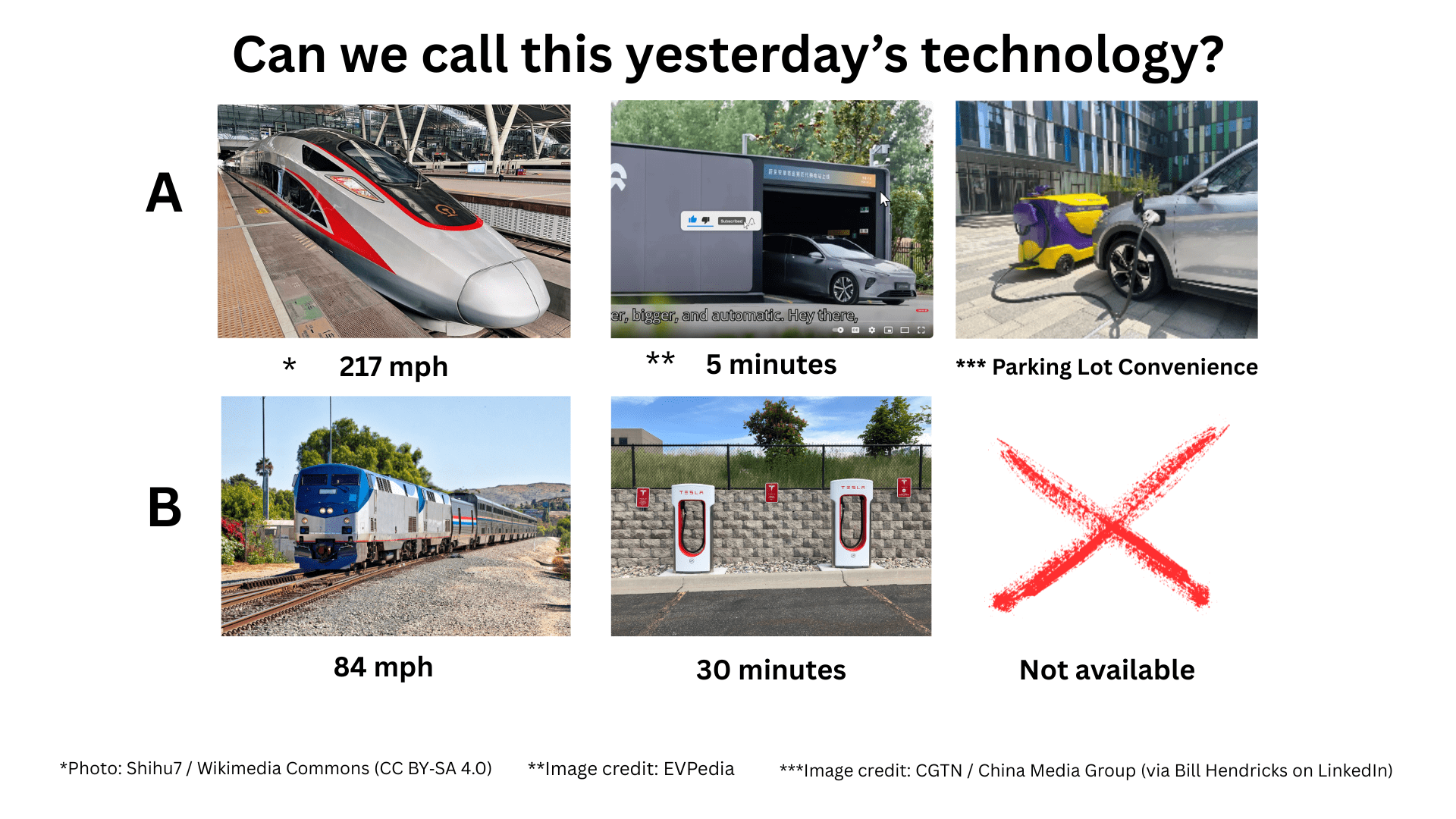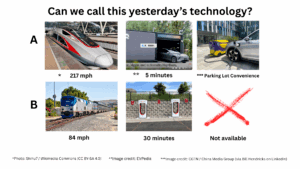A Shift Few Are Willing to Admit
It’s uncomfortable to say out loud in the U.S., but here it is: in many ways that matter, China is now ahead. Not just catching up. Not just competing. Leading.
In a country where praising China can feel like a taboo, it’s easier to frame them as a Cold War rival or Olympic adversary. But ignoring their actual accomplishments in applied technology, infrastructure, and scaling isn’t patriotism. It’s blindness.
Consumer-Level Tech Dominance
Forget theoretical lab advances. On the streets of Shenzhen and Chengdu, you’ll find:
- NIO battery-swap stations operating at scale, completing a swap in under 5 minutes. Watch a NIO battery swap in action. No waiting 30 minutes for a recharge
- Contemporary Amperex Technology Co., Limited (commonly known as CATL) is an advanced battery designer and manufacturer pushing energy density and cycle life far beyond current U.S. offerings.
- Mobile EV charging stations that come to you.
- Advanced High Speed Trains that get you to your destination in 60% less time.
While Americans debate which card reader works best at a farmer’s market, China moved on to frictionless, near-universal digital payments years ago.
While the U.S. Pioneers, China Deploys
America is still the land of invention. But it has become the land of endless pilots and beta tests. Proofs of concept that rarely become public goods.
China, by contrast, excels at rollout. High-speed rail across the country. EV infrastructure built before the demand hits. The mindset: build it and the future will come. And when it does, it rides a bullet train.
Open-Source Diplomacy at Davos
When Chinese officials talk about opening up AI or green energy tech, it’s not naïve benevolence. It’s strategy.
China often shares earlier versions of its innovations, making them open-source while it continues advancing the next iteration. It gains global influence while keeping its lead.
This is economic diplomacy, not charity. A long game the West struggles to match.
Military vs. Economic Relevance
Yes, the U.S. still dominates militarily. But tanks and jets don’t define civilian quality of life or energy transition.
Roads, rails, ports, grid tech—these shape economic futures. China’s Belt and Road Initiative reflects this. Infrastructure is influence.
Final Reflection: Why We Should Study, Not Dismiss, China’s Rise
To learn from China is not to betray America. Business leaders and athletes study their rivals to improve.
But in geopolitics, we treat acknowledgment as disloyalty. That’s a mistake.
If we want to lead again, we need to understand how and where we fell behind. Only then can we catch up—and maybe, someday, set the pace again.




